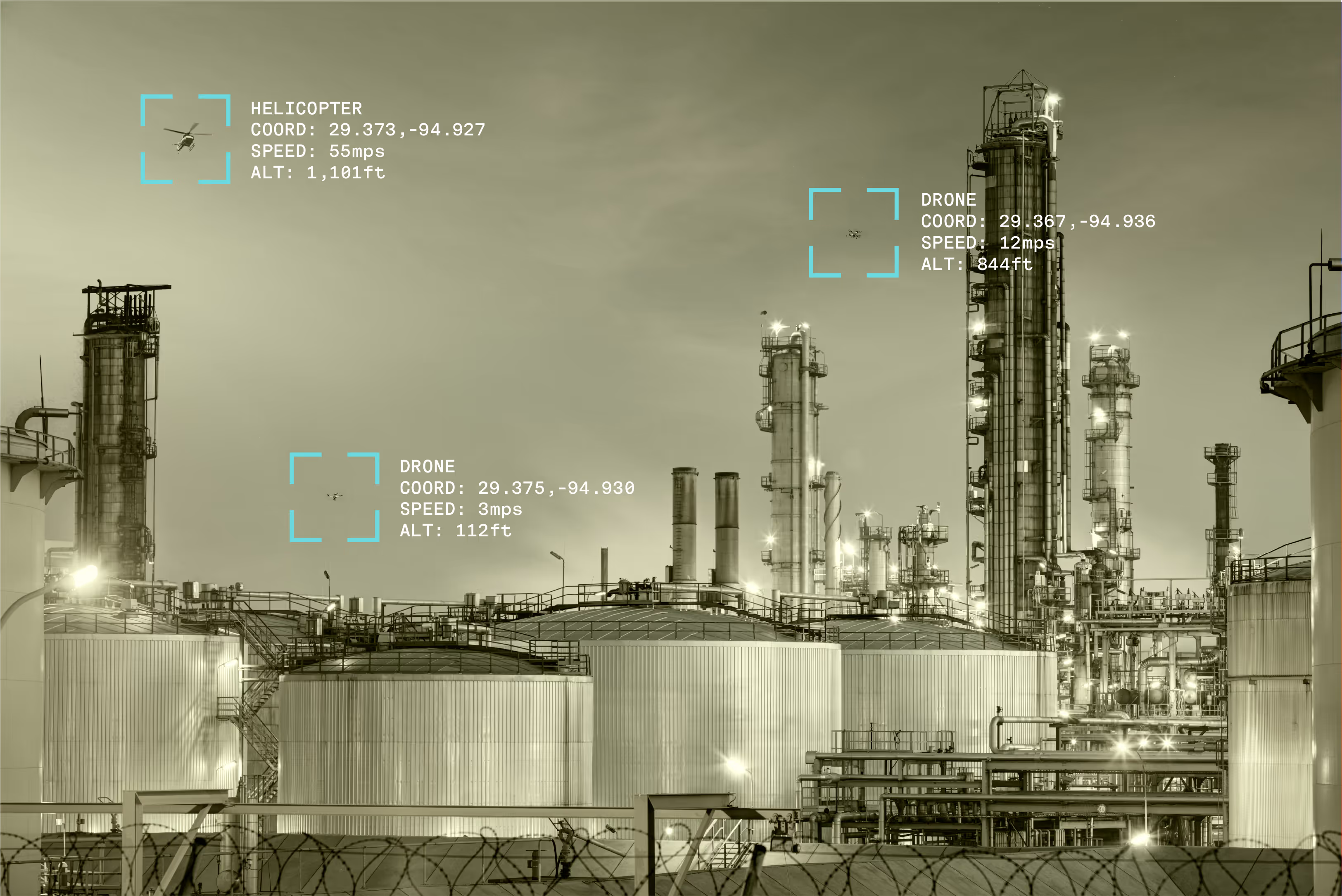Unlocking urban innovation with drone detection.
%20(1).avif)
RF Sensing: Paving the Way for Innovative Urban Solutions
As urban environments grow increasingly complex and interconnected, the challenges of managing them intensify. With expanding infrastructure, larger populations, and greater reliance on technology, cities need innovative solutions to stay efficient and secure. Radio frequency (RF) sensing emerges as a vital tool, leveraging wireless signals from various sources—such as drones, telecom infrastructure, and IoT networks—to provide real-time data that can transform urban living. This technology opens a new world of opportunities for urban planners, city administrators, and technology innovators alike, facilitating smarter, more resilient cities.
The Growing Importance of RF Detection
Smart City Applications
RF sensing has become essential in smart cities, where technologies like autonomous systems, environmental monitoring, and infrastructure management rely heavily on real-time data. A major area where RF sensing shines is in Urban Air Mobility (UAM) and Uncrewed Traffic Management (UTM).
- Urban Air Mobility (UAM) and Uncrewed Traffic Management (UTM): UAM is rapidly gaining traction as cities explore the potential of airborne transportation for delivering goods and even passengers. However, the complexities of integrating uncrewed aerial systems (UAS) into busy urban airspaces present significant challenges. To manage this, RF sensing plays a key role in enabling safe Beyond Visual Line of Sight (BVLOS) operations for drones and ensuring they follow flight paths without disrupting other airspace users.
UTM systems powered by RF sensing allow cities to track and manage uncrewed aircraft in real time, ensuring they operate safely within designated air corridors. This is especially important for dense urban environments where air traffic management for small uncrewed vehicles needs to seamlessly integrate with traditional crewed aircraft. With RF sensing, authorities can detect and identify any uncrewed aircraft that don’t broadcast Remote ID signals or are sending false data, improving overall safety and compliance. This allows UAM services—such as drone deliveries, emergency medical transport, and passenger air taxis—to scale without creating chaos in urban airspace.
- Backup for Crewed Aircraft: While larger crewed aircraft typically use systems like ADS-B (Automatic Dependent Surveillance-Broadcast), smaller aircraft, such as helicopters, may not always have ADS-B capabilities. RF sensing acts as a reliable backup, providing visibility into the movement of these smaller crewed vehicles. In this way, cities can manage both crewed and uncrewed air traffic, ensuring that all forms of urban air mobility operate safely and efficiently.
- Drone Detection and Security: UAM and UTM systems rely heavily on accurate and comprehensive drone detection. In urban areas, drones must be tracked meticulously to prevent interference with crewed aircraft or entry into restricted zones. RF sensing enhances these efforts by offering real-time identification of both authorized and unauthorized drones, allowing city managers and security personnel to respond swiftly to any potential threats.
Innovations in Autonomous Vehicles and Public Transportation
Beyond air mobility, RF sensing also supports innovations in autonomous vehicles on the ground. With autonomous vehicles becoming an integral part of future urban transportation systems, RF sensing enables the tracking of vehicle movements, identifies hazards, and integrates autonomous traffic with public transport systems. By monitoring interference and ensuring seamless communication between vehicles and traffic control centers, RF sensing allows autonomous systems to function more safely and efficiently.
- Smart Energy Grids and Infrastructure: RF sensing is key to developing intelligent urban infrastructure, especially in the realm of energy management. By integrating RF sensors into the grid, cities can monitor electricity and water usage in real time, detect anomalies, and optimize resource allocation—ensuring more sustainable and energy-efficient urban operations.
Security Applications
In addition to advancing urban mobility and infrastructure, RF sensing also has critical applications in public safety and security.
- Public Safety: By monitoring wireless signals from drones, and other communication equipment, RF sensing enables law enforcement to detect unauthorized activities. From identifying rogue drones near critical sites to detecting suspicious communications in public spaces, RF sensing offers enhanced surveillance capabilities for urban security.
- Data Protection and Critical Infrastructure: RF sensing can safeguard vital urban infrastructures—such as power grids, hospitals, and transportation networks—by identifying anomalies in communication patterns, signaling potential security breaches before they escalate.
Opportunities for Urban Innovation
Disaster Response and Recovery
RF sensing technology plays a crucial role in post-disaster scenarios, enabling search and rescue teams to detect signals from mobile devices buried under rubble. This capability significantly improves the speed and accuracy of rescue operations, especially in dense urban environments where traditional communication networks may be disrupted.
Efficient RF Spectrum Management
As cities become more connected, the RF spectrum becomes increasingly crowded with signals from countless devices. RF sensing allows cities to monitor and manage this spectrum more effectively, ensuring that interference is minimized, and spectrum allocations are optimized. This is essential for ensuring smooth operations across all urban technology systems, from public safety networks to communication infrastructure.
While RF sensing doesn’t directly control vehicular traffic, it plays a vital role in identifying and mitigating signal interference that could disrupt urban traffic management systems. This ensures that traffic control technologies, such as sensors and communication devices, function without interruption.
Mapping Cellular Infrastructure
RF sensing can also be used to map out cellular infrastructure across a city, identifying communication towers, tracking frequency band usage, and offering competitive intelligence. This information can guide the development of more robust network infrastructures to support future urban growth.
Enforcing Spectrum Allocations
RF sensing systems help cities enforce spectrum allocations by identifying illegal or inefficient use of frequencies. This capability ensures that communication channels remain reliable and free from interference, particularly in high-density urban areas where spectrum management is critical.
Public Safety and Security
By monitoring communication signals in public spaces, RF detection systems help law enforcement detect unauthorized activities, identify suspicious behavior, and enhance urban security measures. These systems also offer significant benefits in crowd management and emergency response coordination.
Smart Infrastructure
RF sensing contributes to the overall intelligence of city infrastructure, from communication networks to utilities. By continuously monitoring wireless signals, cities can detect faults in infrastructure, prevent outages, and optimize resource management.
Real-World Examples and Success Stories
One notable real-world example is Hidden Level’s collaboration with NASA Ames Research Center on the Airspace Monitoring Service (AMS). Hidden Level’s RF-based technology tracks Remote ID information for uncrewed aircraft, monitoring airspace activity around the clock in areas with sensor installations. This system not only detects drones that broadcast false or no information but also provides real-time airspace intelligence, ensuring a safer and more secure airspace for both crewed and uncrewed operations. For more details, read about Hidden Level’s work with NASA Ames.
Conclusion
RF sensing represents a transformative leap forward for urban innovation, enabling cities to improve safety, manage infrastructure more effectively, and create smarter transportation systems. By integrating RF sensing into urban planning, cities can unlock new opportunities for growth, sustainability, and enhanced quality of life. Now is the time for city planners, government officials, and tech innovators to adopt RF sensing solutions that pave the way for future-ready urban ecosystems.










%20(1).avif)
